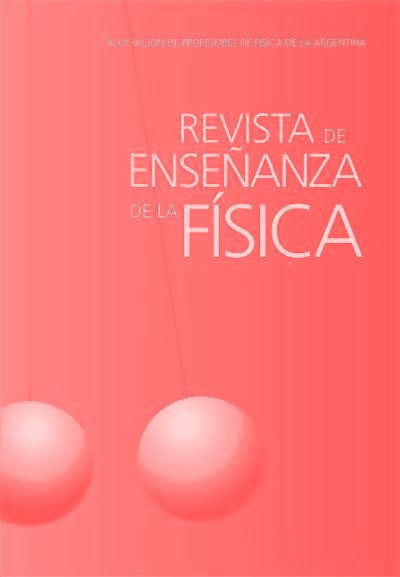Magnetic field in the virtual classroom in pandemic age
DOI:
https://doi.org/10.55767/2451.6007.v32.n2.31324Keywords:
Face to face learning; Distance learning; Virtual classroom; Electricity and magnetismAbstract
We report the experience in times of confinement of the conversion from the scholarly modality to the virtual modality, of the Electricity and Magnetism Learning Unit, located in the curricular mesh of two degrees of Engineering and physical-mathematical area of a public Mexican university. It was found and analyze, despite the circumstances and with the bilateral teacher-student arrangement; it was possible to give academic continuity to the plans and programs of study. The undisputed allies in this extraordinary and sudden circumstance were the appropriate use of technology, but also the degree of teaching professionalism of those in charge of teaching the subjects. Through teaching planning, willingness of students to learn, an unpublished semester was concluded. Some reflections on areas for improvement are expressed to strengthen the next edition of this complex subject, hand in hand with educational research. In addition, is argue that distance education does not admit improvisation; it demands didactic knowledge of the content on the part of the teacher and concerning the use of technology.
References
Ablanque, J., Benito, R. M., Losada, J. C., Arranz, F. J., Seidel, L., Cámara, M. E., y Borondo, F. (2008). Laboratorio Virtual de Física en e-learning. Relada, 2(3), 131-136.
Bastida, D. (2019). Adaptación del modelo 5E con el uso de herramientas digitales para la educación: propuesta para el docente de ciencias. Revista Científica, 34(1), 73-80. Doi: https://doi. org/10.14483/23448350.13520
Bauer, W. y Westfall, G. D. (2011). University physics with modern physics, Vol. 2. McGraw-Hill.
Bertram, D. (2006) Likert Scales: CPSC 681—Topic Report. Poincare, 1-11. [Consultado el 11 de julio del 2020] Dispo-nible en: http://poincare.matf.bg.ac.rs/~kristina/topic-dane-likert.pdf
Bybee, R., Taylor, J., Gardner, A., Van Scotter, P., Powell, J., Westbrook, A. y Landes, N. (2006). The BSCS 5E instruc-tional model: Origins and effectiveness. Colorado Springs, Co: BSCS.
Ergin, I. (2012). Constructivist approach based 5E model and usability instructional physics. Latin-American Journal of Physics Education, 6(1), 14-20.
Escobar, F. y Nava, R. (2019) Metodología Alternativa para el Aprendizaje de la Dinámica de Fluidos, Caso ESIQIE. Eu-ropean Scientific Journal, 15(9), 577-596.
Google (s.f). Administra la enseñanza y el aprendizaje con Classroom. Consultado el 30 de junio del 2020]. Disponible en: https://edu.google.com/intl/es-419/products/classroom/?modal_active=none
Guisasola, J., Almudí, J.M. y Zubimendi, J. L. (2003). Dificultades de aprendizaje de los estudiantes universitarios en la teoría del campo magnético y elección de los objetivos de enseñanza. Enseñanza de las ciencias: revista de investiga-ción y experiencias didácticas, 21(1), 79-94.
Instituto Politécnico Nacional (s.f.). Principales características del docente 4.0. Consultado el 12 de julio del 2020]. Disponible en: https://docente.4-0.ipn.mx/index.php/innovacion/
Kraus, D. (1986). Electromagnetismo. Mc Graw-Hill.
Monroy, M. (2017). La planeación de los docentes de matemáticas: un proceso para la reflexión. En J. M. López-Calva (Ed.), Transformación de la práctica docente universitaria: aproximaciones desde la investigación-acción (pp. 117-149). México: Colofón; Universidad Popular Autónoma del Estado de Puebla.
Questionpro (s.f.). ¿Qué es la escala de Likert y cómo utilizarla? [Consultado el 4 de julio del 2020]. Disponible en: https://www.questionpro.com/blog/es/que-es-la-escala-de-likert-y-como-utilizarla/
Serra, R., Vega, G., Ferrat, A., Lunazzi, J. y Magallanes, D. (2009). El holograma y su utilización como un medio de ense-ñanza de la física en ingeniería. Revista brasileira de ensino de física, 31(1), 1401-1.
Serway R. y Jewett J. (2008). Física para Ciencias e Ingeniería. Volumen 2. Cengage Learning.
Tecpan, S., Benegas, J., y Zavala, G. (2015). Entendimiento conceptual y dificultades de aprendizaje de Electricidad y Magnetismo identificadas por profesores. Latin-American Journal of Physics Education, 9(1), 4.
Published
How to Cite
Issue
Section
License

This work is licensed under a Creative Commons Attribution-NonCommercial-NoDerivatives 4.0 International License.
Aquellos autores/as que tengan publicaciones con esta revista, aceptan los términos siguientes:Los autores/as conservarán sus derechos de copiar y redistribuir el material, bajo los términos estipulados en la Licencia de reconocimiento, no comercial, sin obras derivadas de Creative Commons que permite a terceros compartir la obra bajo las siguientes condiciones:
- Reconocimiento — Debe reconocer adecuadamente la autoría, proporcionar un enlace a la licencia e indicar si se han realizado cambios. Puede hacerlo de cualquier manera razonable, pero no de una manera que sugiera que tiene el apoyo del licenciador o lo recibe por el uso que hace.
- NoComercial — No puede utilizar el material para una finalidad comercial.
- SinObraDerivada — Si remezcla, transforma o crea a partir del material, no puede difundir el material modificado.
- Los autores/as podrán adoptar otros acuerdos de licencia no exclusiva de distribución de la versión de la obra publicada (p. ej.: depositarla en un archivo telemático institucional o publicarla en un volumen monográfico) siempre que se indique la publicación inicial en esta revista.
- Se permite y recomienda a los autores/as difundir su obra a través de Internet (p. ej.: en archivos telemáticos institucionales o en su página web) antes y durante el proceso de envío, lo cual puede producir intercambios interesantes y aumentar las citas de la obra publicada. (Véase El efecto del acceso abierto).














